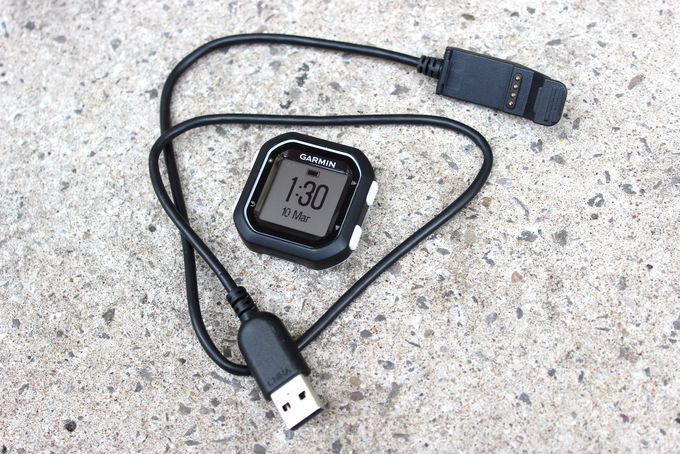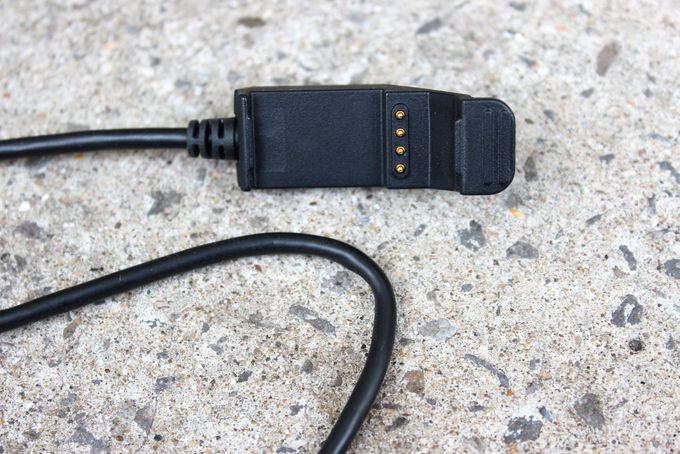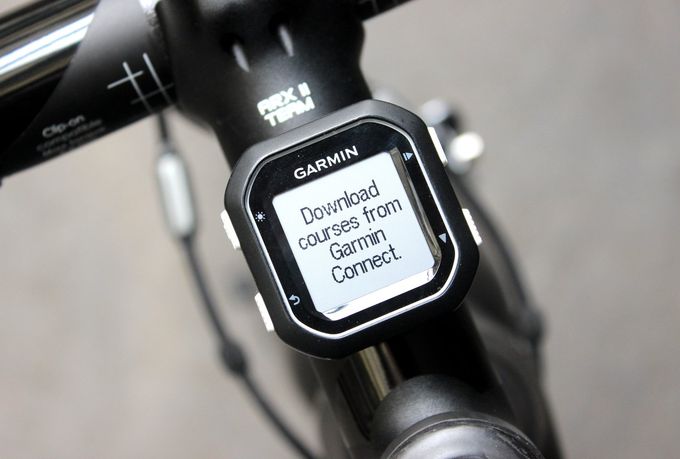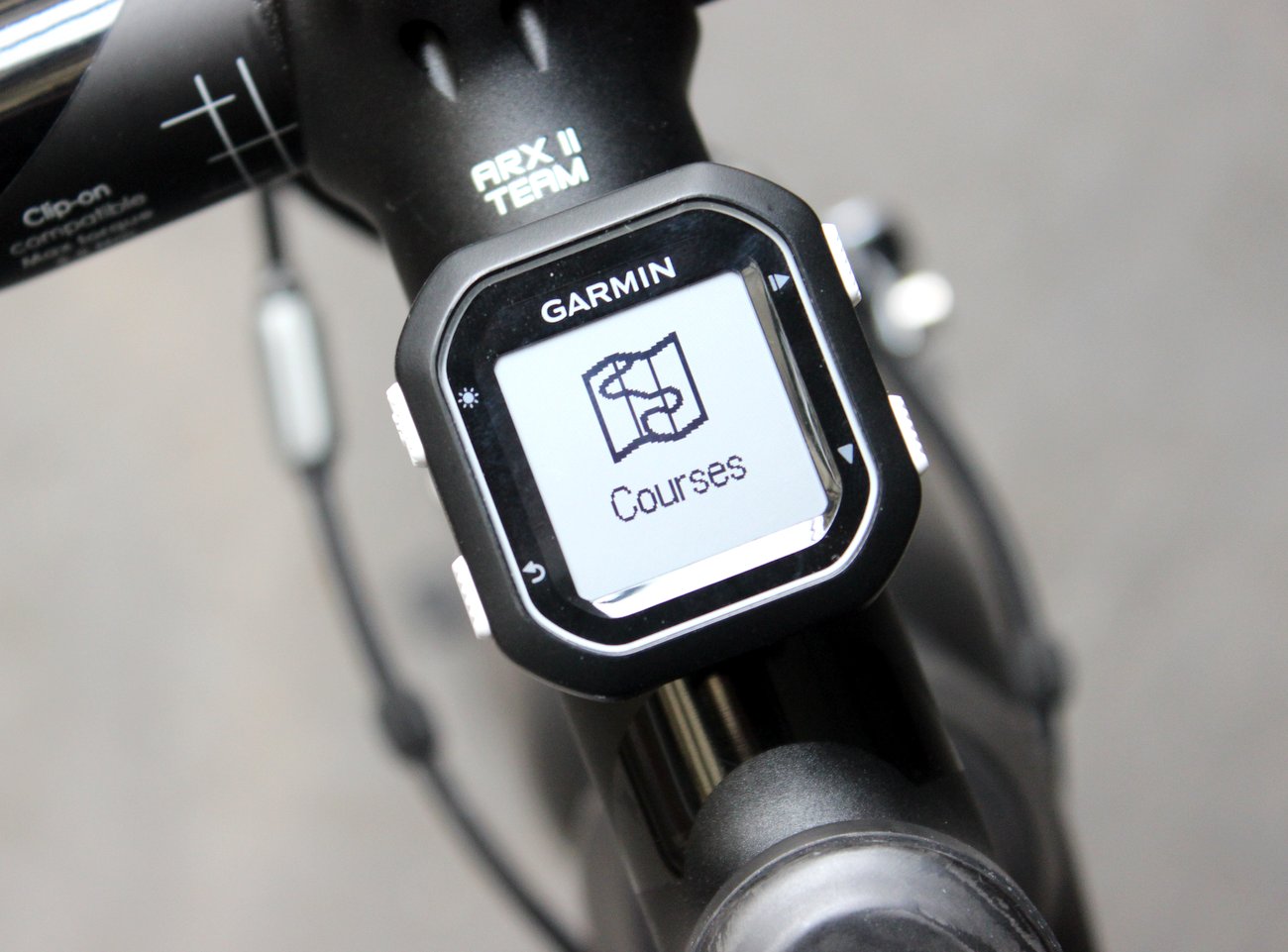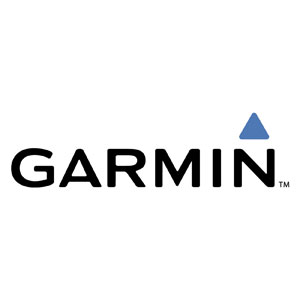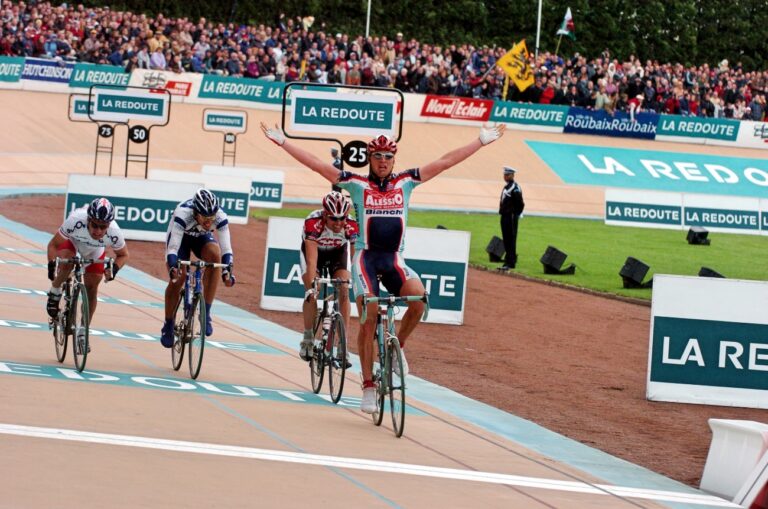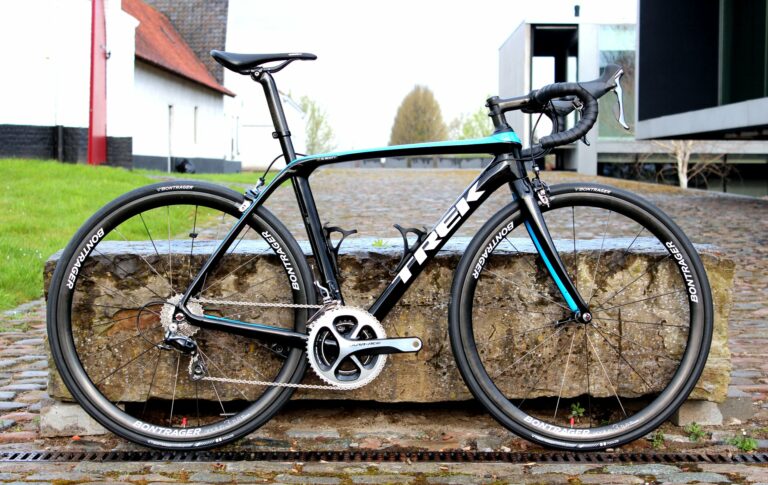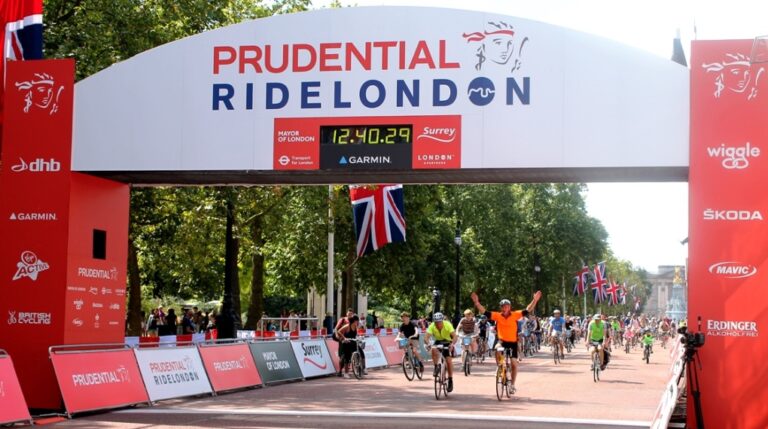The Garmin Edge 25 is a tiny computer which still packs a punch when it comes to features, making it a great option for riders who don’t need the last word in data readouts.
Lets start with the basics: this is a very small unit. No really, it is. Coming in at about the same size as a 50p piece, and weighing just 30g, it’s hard to imagine how a bike computer could be lighter or smaller than this, yet remain so usable. It uses the same quarter-turn mount as every other current Garmin computer – if you’re not familiar then it’s very simple to use and provides a solid grip.
Interface
The interface uses buttons like the other relatively new unit to the stable, the mid-range Edge 520, instead of the touchscreen format of the top-of-the-range Edge 1000, which serves to speed up the software without detracting from ease of use. It’s intuitive, allowing quick scrolling to functions such as ride, history and device pairing – so intuitive, in fact, that after a couple of rides even the most phobic of technophobes will be at home with the system.
